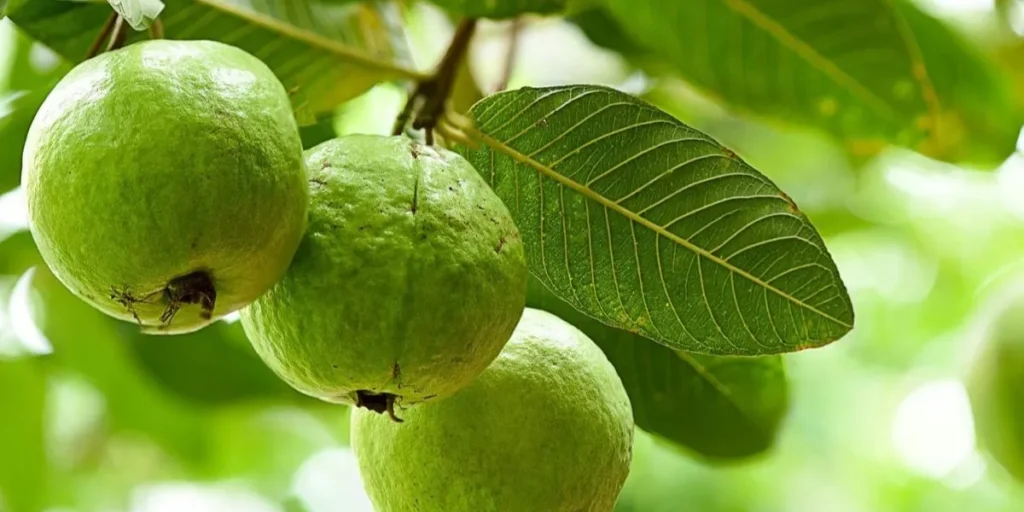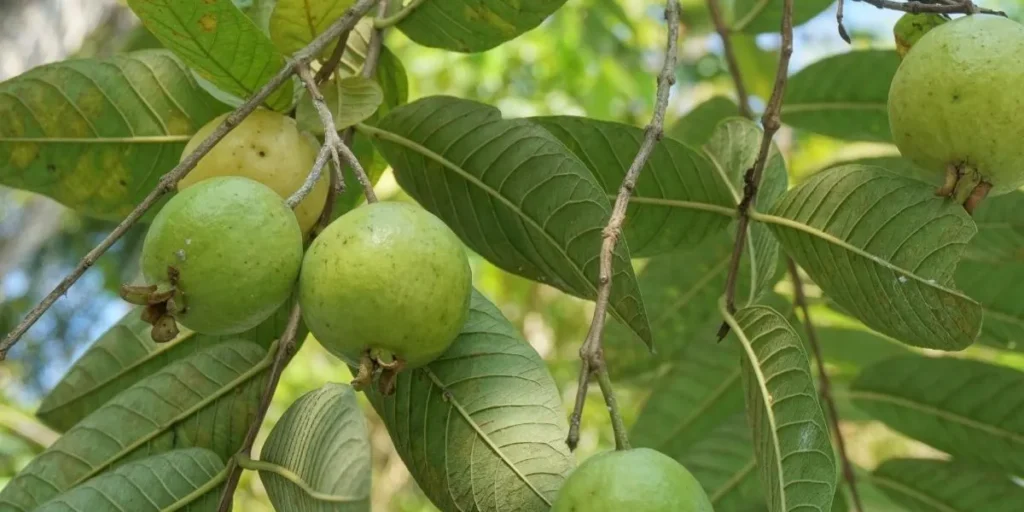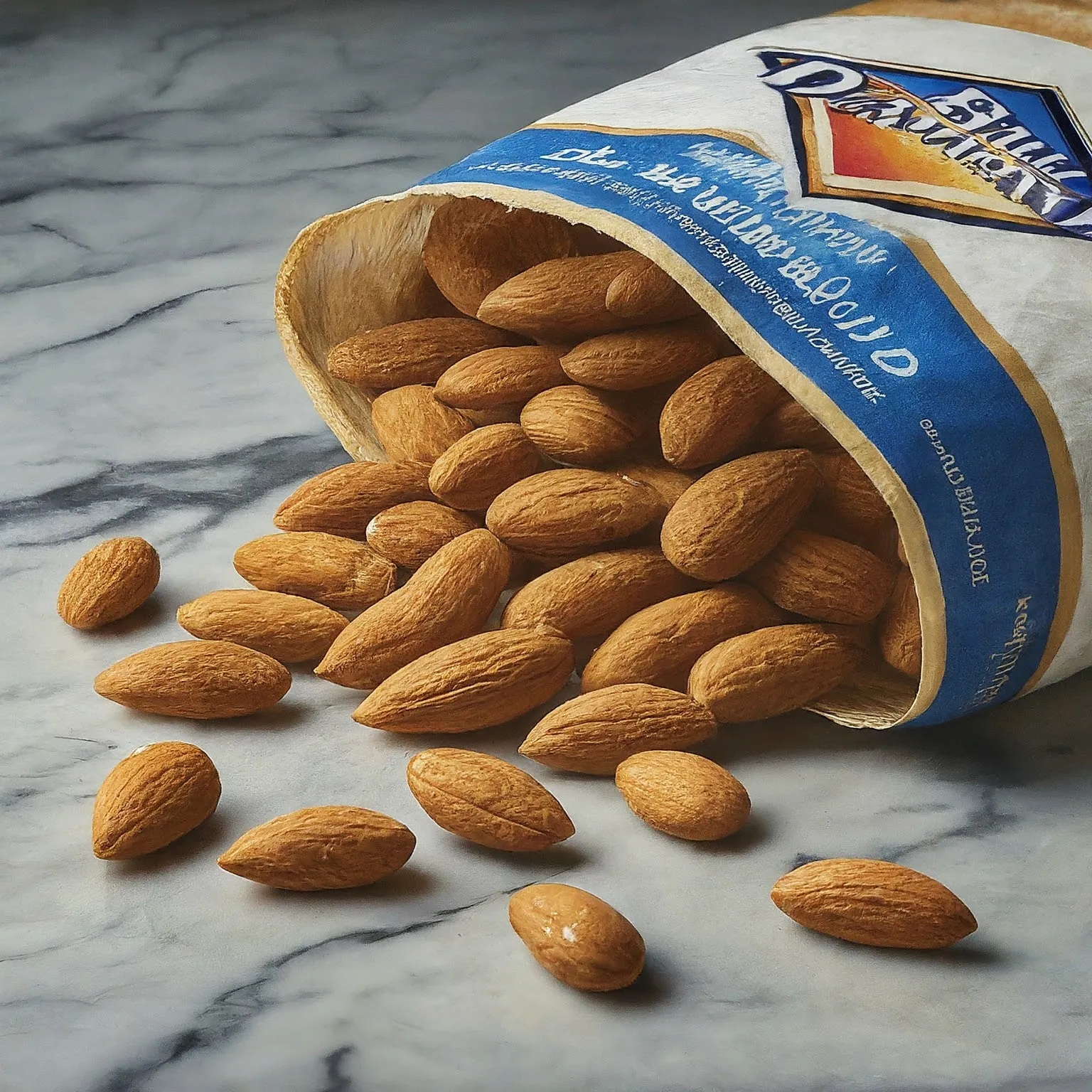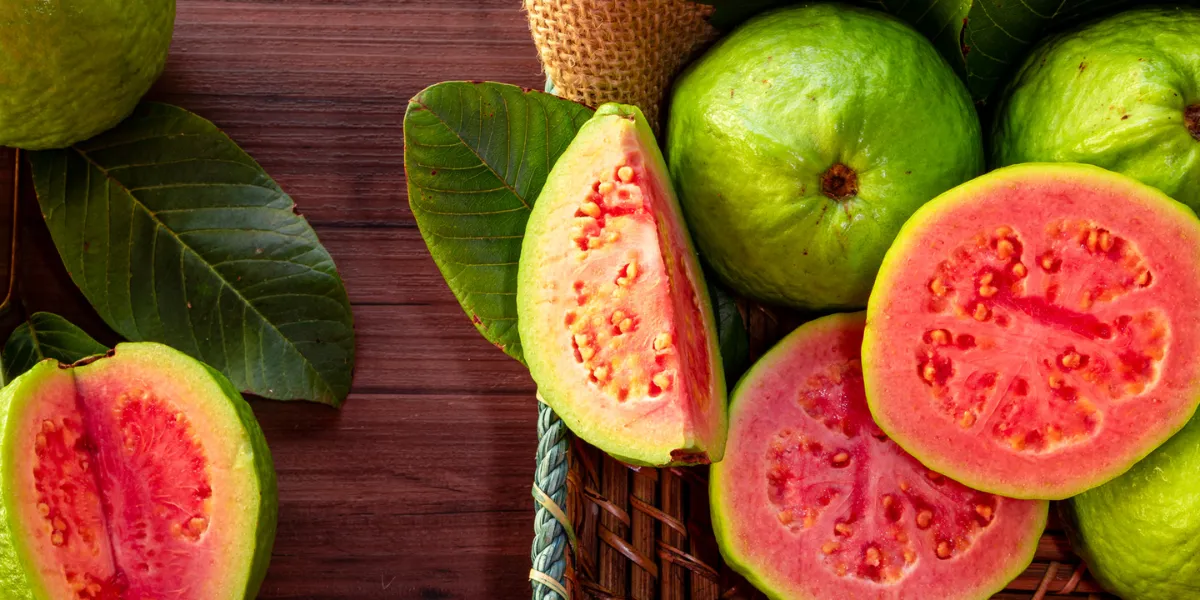The guava tree, with its vibrant green leaves and bounty of sweet-tart fruit, is a tropical treasure that can thrive in many subtropical regions. Not only does it grace your garden with beautiful blooms, but it also yields a delicious and nutritious fruit enjoyed worldwide. Whether you’re a seasoned gardener or just starting your exploration of exotic plants, the guava tree is a rewarding addition to your landscape.
Table of Contents
ToggleGuava 101: Origins and Varieties
Guava (Psidium guajava) is a small evergreen tree or shrub native to Central and South America, the Caribbean, and Mexico. It belongs to the myrtle family (Myrtaceae), closely related to other tropical favorites like cloves and eucalyptus. The common guava, also known as the apple guava or lemon guava, is the most widely cultivated variety.
There are over 100 different guava varieties, each with unique characteristics. Some popular types include:
- Red Indian Guava: Prized for its deep red flesh and exceptionally sweet flavor.
- Strawberry Guava: Smaller than the common guava, with a delightful strawberry aroma and pink flesh.
- Peruvian Guava: Larger fruit with a smooth, yellow rind and white flesh.
Choosing the Right Guava for You:
Consider these factors when selecting a guava variety for your garden:
- Climate: Guava trees prefer warm, humid climates and struggle with frost. Ensure your chosen variety is suitable for your region’s temperature range.
- Fruit Size and Flavor: Do you prefer a large, juicy guava or a smaller, more intensely flavored one? Different varieties offer a range of sweetness and tartness.
- Maturity Time: Some varieties bear fruit within a few years, while others take longer to mature.
Planting and Caring for Your Guava Tree
Guava trees are relatively low-maintenance but require specific care to flourish. Here’s a step-by-step guide to planting and nurturing your guava:
Planting:
- Timing: Plant your guava tree in the spring or early summer, after the danger of frost has passed.
- Location: Choose a sunny spot with well-drained soil. Guava trees need at least 6-8 hours of direct sunlight daily.
- Digging: Prepare a planting hole two to three times wider than the root ball and slightly deeper.
- Planting: Gently loosen the roots of your guava tree and place it in the hole. Ensure the root flare (the area where the trunk meets the roots) sits slightly above the soil level.
- Backfilling: Fill the hole with the removed soil, gently tamping it down to remove air pockets.
- Watering: Water your newly planted guava tree thoroughly and keep the soil moist but not soggy for the first few weeks.
Care:
- Watering: Guava trees are moderately drought-tolerant but appreciate regular watering during dry spells. Aim for deep watering that soaks the soil thoroughly, allowing the top inch to dry before watering again.
- Fertilizing: Feed your guava tree with a balanced fertilizer formulated for fruit trees during the growing season (spring and summer). Follow the instructions on the fertilizer package for proper application rates.
- Pruning: Prune your guava tree regularly to maintain its shape and encourage fruit production. Prune after fruiting season to remove dead, diseased, or overcrowded branches.
Tips:
- Mulching: Apply a layer of mulch around the base of your guava tree to retain moisture, suppress weeds, and regulate soil temperature.
- Pest Control: Guava trees are generally resistant to pests and diseases. However, keep an eye out for common problems like scale insects, mealybugs, and fungal diseases. Use organic methods whenever possible to address pest or disease issues.
The Sweet Rewards: Harvesting and Enjoying Your Guava Fruit
The wait is finally over! Your guava tree has produced its delicious fruit, and it’s time for harvesting. Here’s how to know when your guavas are ripe and ready to enjoy:
- Color: The fruit will change color from green to yellow, pink, or red depending on the variety.
- Aroma: Ripe guavas will have a sweet, fragrant aroma.
- Give: When gently pressed, the fruit should give slightly but not be mushy.
Harvesting:
- Use sharp pruning shears or hand pruners to carefully clip the guava fruit from the tree, leaving a short stem attached.
- Avoid pulling or twisting the fruit, as this can damage the tree.
Storing and Enjoying Your Guavas
Here are some additional ways to store and enjoy your guavas:
- Freezing: For longer storage cut ripe guavas into halves, remove the seeds, and freeze them on a baking sheet. Once frozen, transfer the guava pieces to airtight containers or freezer bags. Frozen guavas can last for up to 8 months. They’re perfect for smoothies, desserts, or adding a tropical twist to yogurt parfaits.
- Drying: Dehydrating your guavas is a great way to preserve their flavor and create a healthy snack. Slice the guavas thinly and dry them in a dehydrator according to the manufacturer’s instructions. Dried guavas can be stored in an airtight container at room temperature for several months.
- Juicing: Guava juice is a refreshing and nutritious drink. Extract the juice from ripe guavas using a juicer. You can enjoy it pure or combine it with other fruits like oranges or apples for a delightful blend.
- Preserves: Capture the essence of your guava harvest by turning them into jams, jellies, or chutneys. These sweet and tangy spreads are perfect on toast, crackers, or used as a filling for pastries.
Guava Beyond the Fruit: Don’t discard the guava leaves! They possess medicinal properties and are used in traditional medicine for various ailments. Guava leaves can be brewed into a tea reputed to have anti-inflammatory and digestive benefits. However, it’s important to consult with a healthcare professional before using guava leaves for medicinal purposes.
A Tropical Feast: Guava Recipes
Here are some simple recipes to inspire you to incorporate guavas into your culinary creations:
- Guava Salsa: A vibrant and flavorful condiment perfect with chips, grilled meats, or fish. Combine diced guavas with red onion, cilantro, lime juice, and a touch of jalapeno for a spicy kick.
- Guava Smoothie: A refreshing and healthy on-the-go breakfast or snack. Blend frozen guava pieces with yogurt, milk, and a touch of honey for a delicious and nutritious drink.
- Guava BBQ Glaze: Elevate your next barbeque with a sweet and tangy guava glaze. Puree ripe guavas with brown sugar, soy sauce, and a touch of ginger to create a unique flavor for your grilled meats.
- Guava Cake: A tropical twist on a classic dessert. Use guava puree to flavor a light and fluffy cake, topped with a guava cream cheese frosting for a delightful treat.
Guava: A Delightful Addition to Your Garden and Diet
With its beautiful foliage, fragrant flowers, and delicious fruit, the guava tree is a rewarding addition to any subtropical garden. By following these simple tips, you can enjoy the bounty of your guava tree and experience the unique taste of the tropics in your own backyard. So, plant a guava tree, savor its juicy fruit, and explore the many ways to incorporate this versatile ingredient into your culinary creations.

Here’s a breakdown of what makes guava trees special:
- Versatility: Guava trees offer a beautiful year-round presence in your garden with their evergreen foliage and fragrant blooms. But the real star is the fruit! You can enjoy it fresh, frozen, dried, juiced, or even turned into jams and jellies. Guava leaves also have potential medicinal uses.
- Nutrient Powerhouse: Guava fruit is a nutritional powerhouse, boasting high levels of vitamin C, vitamin A, and dietary fiber.
- Relatively Low Maintenance: Compared to other fruit trees, guavas are fairly easy to care for. They’re moderately drought-tolerant and require minimal pruning.
Guava Tree Sweet Spots:
- Warm and Humid: Guava trees thrive in warm, humid climates with plenty of sunshine. They struggle with frost and prefer areas with consistent temperatures above freezing.
- Well-Drained Soil: While guava trees are adaptable, they dislike soggy conditions. Choose a planting location with well-draining soil to prevent root rot.
Guava Tree Size:
- Compact to Medium: Guava trees typically grow to be 3-10 meters (10-33 feet) tall. Depending on the variety, they can be grown as shrubs or small trees.
Fruiting Time:
- Patient Reward: The wait for your first guava harvest can vary depending on the variety. Some guavas may start producing fruit within 3-4 years, while others take 5-7 years to mature and bear fruit.
Climate Champions:
- Tropical Delights: Guava trees flourish in USDA hardiness zones 9b-11. These zones encompass warm regions in Florida, California, Texas, and Arizona.
Guava Tree Lifespan:
- Long-lasting Bounty: With proper care, a guava tree can live for 40-70 years, providing you with a lifetime of delicious fruit and beautiful foliage.














